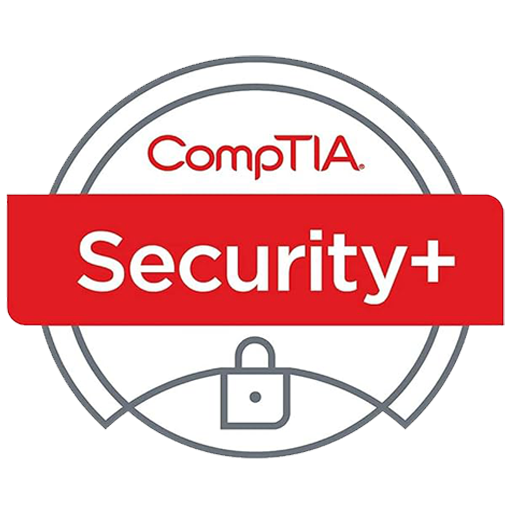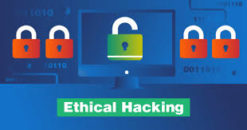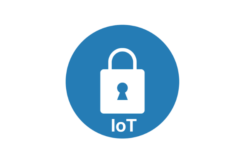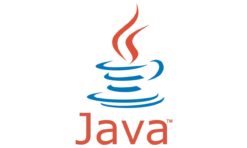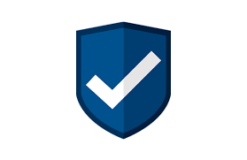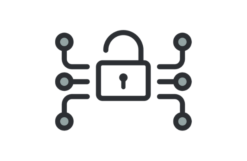Duration: 5 days – 35 hrs
Overview
Welcome to the CompTIA Security+ Certification Training Course – your gateway to becoming a skilled and certified network security professional. In this comprehensive 35-hour program, we’ll equip you with the knowledge and skills needed to excel in the field of network security.
The CompTIA Security+ certification is a globally-recognized, vendor-neutral credential designed to validate your expertise in network security. This training course goes beyond mere exam preparation; it’s a hands-on journey that immerses you in the world of security concepts, tools, and strategies. You will not only learn to react effectively to security incidents but also gain the ability to proactively anticipate and defend against potential threats.
Objectives
- Compare and contrast various types of security controls.
- Summarize fundamental security concepts.
- Explain the importance of change management processes and the impact to security.
- Explain the importance of using appropriate cryptographic solutions.
- Compare and contrast common threat actors and motivations.
- Explain common threat vectors and attack surfaces.
- Explain various types of vulnerabilities.
- Analyze indicators of malicious activity.
- Explain the purpose of mitigation techniques used to secure the enterprise.
- Compare and contrast security implications of different architecture models.
- Apply security principles to secure enterprise infrastructure.
- Compare and contrast concepts and strategies to protect data.
- Explain the importance of resilience and recovery in security architecture.
- Apply common security techniques to computing resources.
- Explain the security implications of proper hardware, software, and data asset management.
- Explain various activities associated with vulnerability management.
- Explain security alerting and monitoring concepts and tools.
- Modify enterprise capabilities to enhance security.
- Implement and maintain identity and access management.
- Explain the importance of automation and orchestration related to secure operations.
- Explain appropriate incident response activities.
- Use data sources to support an investigation.
- Summarize elements of effective security governance.
- Explain elements of the risk management process.
- Explain the processes associated with third-party risk assessment and management.
- Summarize elements of effective security compliance.
- Explain types and purposes of audits and assessments.
- Implement security awareness practices.
Audience
- System Administrators
- Network Administrators
- IT Managers
- IT Support Staff
- Security Analysts
- Security Operations Center (SOC) Analysts
- Incident Responders
- Threat Analysts
- Network Engineers
- Network Architects
- Network Designers
- Network Managers
- Information Security Officers
- Professionals responsible for ensuring compliance and governance.
- Those involved in developing and enforcing security policies.
- Security Consultants
- Professionals providing security consulting services.
- Individuals advising organizations on security best practices.
- Aspiring Security Professionals
- Individuals looking to transition into the field of cybersecurity.
- Those interested in obtaining a foundational certification in network security.
Pre- requisites
- Basic understanding of networking and administration concepts.
- Familiarity with general IT principles
- Know the function and basic features of PC components.
- Know basic network terminology and functions (such as OSI Model, topology, Ethernet, TCP/IP, switches and routers).
- Understand TCP/IP addressing, core protocols and troubleshooting tools.
- While there are no strict prerequisites, some experience in IT is beneficial.
Course Content
Summarize Fundamental Security Concepts
- Security Concepts
- Security Controls
Compare Threat Types
- Threat Actors
- Attack Surfaces
- Social Engineering
Explain Cryptographic Solutions
- Cryptographic Algorithms
- Public Key Infrastructure
- Cryptographic Solutions
Implement Identity and Access Management
- Authentication
- Authorization
- Identity Management
Secure Enterprise Network Architecture
- Enterprise Network Architecture
- Network Security Appliances
- Secure Communications
Secure Cloud Network Architecture
- Cloud Infrastructure
- Embedded Systems and Zero Trust Architecture
Explain Resiliency and Site Security Concepts
- Asset Management
- Redundancy Strategies
- Physical Security
Explain Vulnerability Management
- Device and OS Vulnerabilities
- Application and Cloud Vulnerabilities
- Vulnerability Identification Methods
- Vulnerability Analysis and Remediation
Evaluate Network Security Capabilities
- Network Security Baselines
- Network Security Capability Enhancement
Assess Endpoint Security Capabilities
- Implement Endpoint Security
- Mobile Device Hardening
Enhance Application Security Capabilities
- Application Protocol Security Baselines.
- Cloud and Web Application Security Concepts
Explain Incident Response and Monitoring Concepts
- Incident Response.
- Digital Forensics.
- Data Sources
- Alerting and Monitoring Tools
Analyze Indicators of Malicious Activity
- Malware Attack Indicators
- Physical and Network Attack Indicators
- Application Attack Indicators
Summarize Security Governance Concept
- Policies, Standards, and Procedures.
- Change Management
- Automation and Orchestration
Explain Risk Management Processes
- Risk Management Processes and Concepts
- Vendor Management Concepts
- Audits and Assessments
Summarize Data Protection and Compliance Concepts
- Data Classification and Compliance
- Personnel Policies


